MARIANI’S
Virtual
Gourmet
July
16, 2017
NEWSLETTER
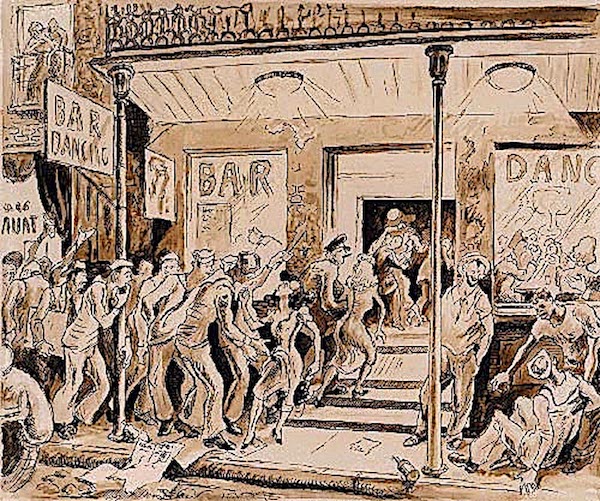
❖❖❖
IN THIS ISSUE
SUMMER IN NEW YORK'S
FINGER LAKES
By John Mariani
NEW YORK CORNER
REBECCAS
By John Mariani
NOTES FROM THE WINE CELLAR
GLOBAL WINERIES FIGHT BACK
AGAINST GLOBAL WARMING
By John Mariani
❖❖❖
SUMMER IN NEW YORK'S
FINGER LAKES
By John Mariani
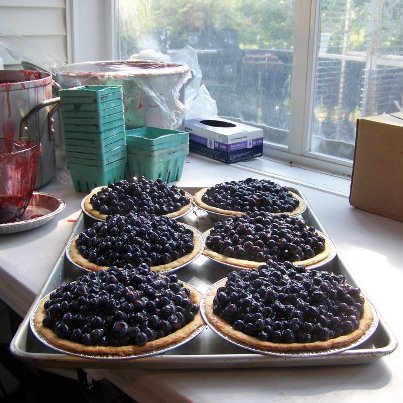
Monica's Pies, Naples, NY
My recent reports on
travel in New York State’s Finger Lakes—eleven
glacial lakes and one Great Lake spread over
9,000 square miles—focused on winter and
springtime, but now summer is in full flourish,
and the hills and farms are bursting with fruit
and wine grapes, and herbs and vegetables are
fanning out in profusion.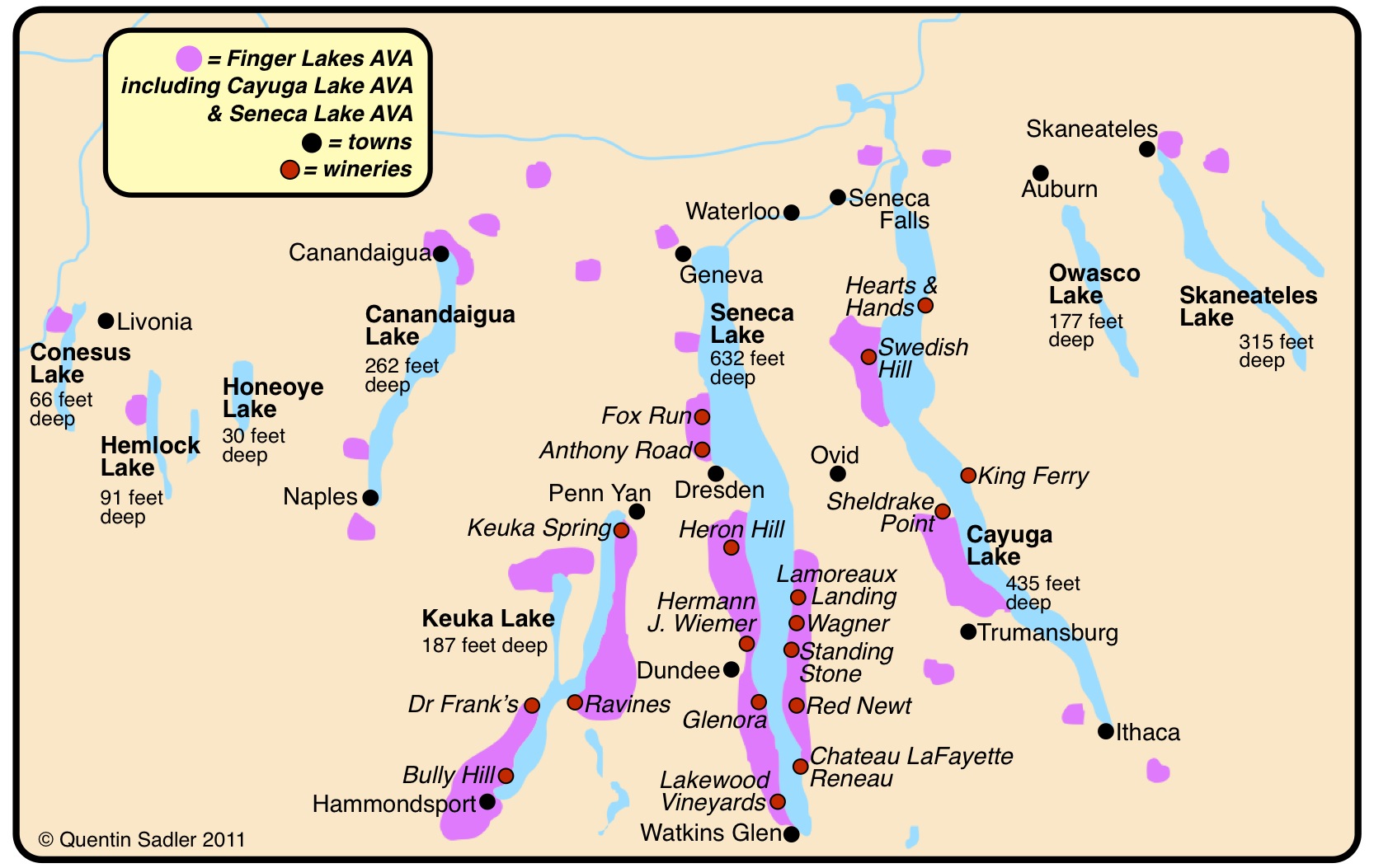 Wildflowers carpet the valleys—bee balm, red
colombine, ragged robin, black knapweed, sweet
William, fireweed and sand surrey.
Wildflowers carpet the valleys—bee balm, red
colombine, ragged robin, black knapweed, sweet
William, fireweed and sand surrey.
Wooden farm stands pop up along
every route, and, with more than 100 wineries in
the region, this is a great season to visit so
many open to the public and taste their bottlings;
indeed there are four established wine trails—Cayuga Lake Wine
Trail, Seneca Lake Wine Trail, Keuka
Lake Wine Trail and Canandaigua Wine
Trail.
Central to such activity is the
New York Wine and
Culinary Center in Canandaigua, which
holds classes, catered affairs, and cooking demos
in its state-of-the-art kitchen (below). At
its Upstairs Bistro at least 90% of the
ingredients featured are from New York, so I
thoroughly enjoyed a lunch that began with a pizza
made with Speck bacon, snow peas, mint pesto and
an egg fresh from the local farm ($12). The
artisan cheeses and meats are the best produced in
the area, from Black Mule Blue and McCadam Cheddar
to salami, pork 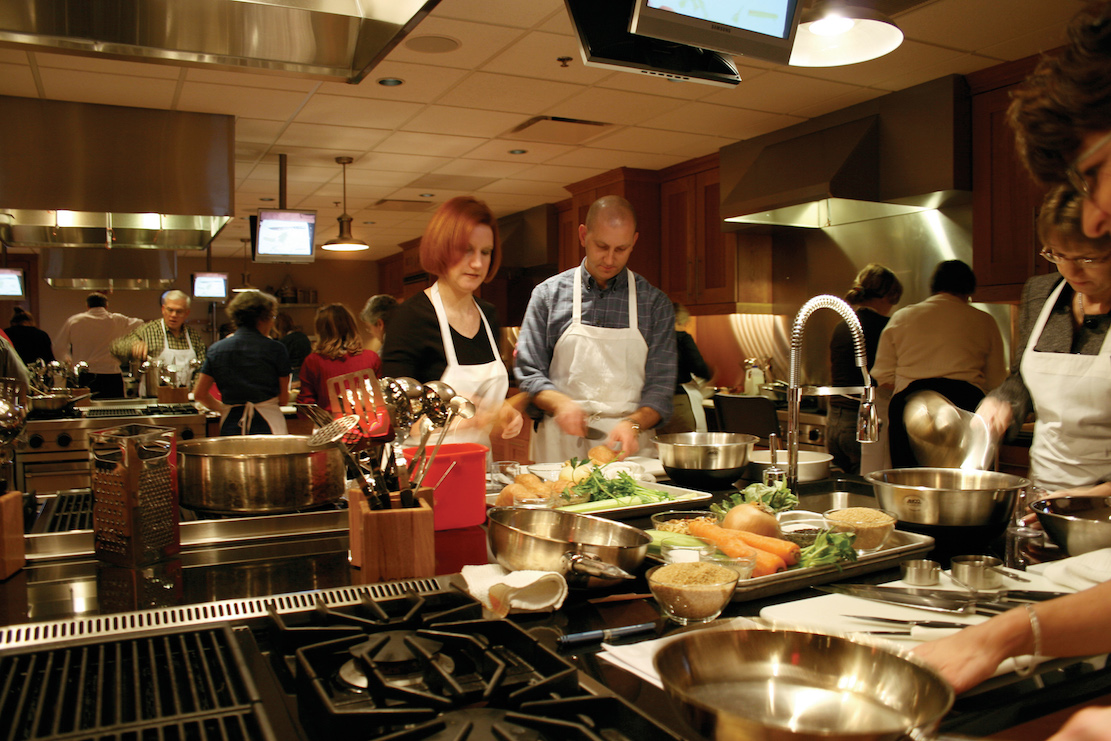 rillettes,
and capicola. The producers are proudly listed on
the menu—Bedient Farms beef, Bostrom Farms pork,
Maplestone Farms chicken, and the glistening milk
white scallops come straight from the waters off
Montauk. Don’t miss the blue cheese potato
croquettes with pickled onions and curried yogurt
($7).
rillettes,
and capicola. The producers are proudly listed on
the menu—Bedient Farms beef, Bostrom Farms pork,
Maplestone Farms chicken, and the glistening milk
white scallops come straight from the waters off
Montauk. Don’t miss the blue cheese potato
croquettes with pickled onions and curried yogurt
($7).
Also in Canandaigua is Sonnenberg Gardens and Mansion State
Historic Park (below), once the summer home of
financier Frederick Ferris Thompson. Set on 52
acres, the 40-room Queen Anne Mansion was built in
1887 and now encompasses a rose garden, rock
garden, Japanese garden and a greenhouse designed
by Lord and Burnham, all now teeming with
carefully cultivated flowers, trees and shrubs.
There is also a Finger Lakes Wine Center where you
can sample bottlings from 40 wineries.
The mansion’s interior is a somber place,
heavy with dark timbers and stags’ heads, but a
tour gives you a real sense of the kind of
entrepreneurial wealth that was so much apart of
the Gilded Age in America, when such 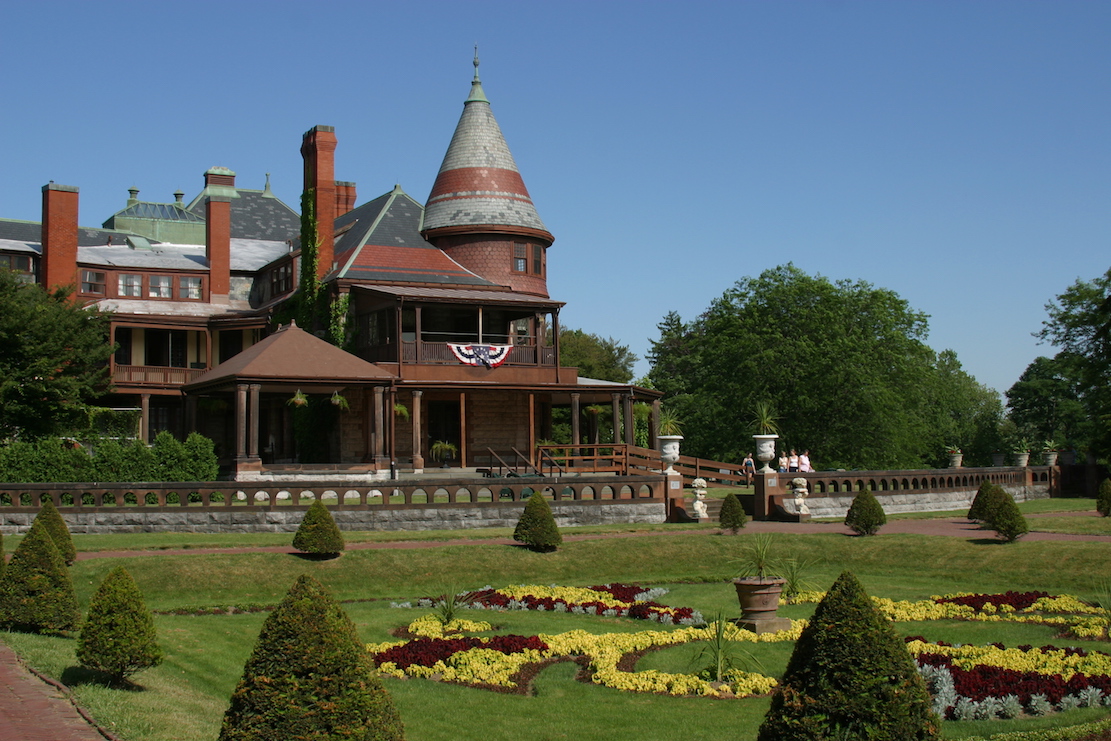 people
spent a relatively short time in such grand homes.
people
spent a relatively short time in such grand homes.
Along Route 21 in the Bristol
Hills near Naples is the beloved local shop Monica’s Pies,
just as small as it should be, still a family
operation. Originally
an honor system sign outside read, “Try before you
buy,” and enough people obviously loved them to
make the Concord grape pies famous, now with 25
other varieties available, along with jams,
jellies and conserves, all made with local fruit.
Take the wares at Monica’s Pies and expand them
exponentially to include all manner of fresh food
from local sources and you have the
Rochester-based, Wegmans
Food Markets, now with more than 70
stores across the mid-Atlantic region. But the
gargantuan flagship is a tourist attraction all on
its own, with aisles and aisles of baked goods,
cheeses, seafood, sushi and anything else you
could crave. Name it and Wegmans sells it—and it
is always of guaranteed top quality and sold at
good prices. It also has one of the best
restaurants in the area, Next Door, which
is always packed at lunch and dinner. Many people
come for the amazingly diverse sushi bar
offerings, along with sandwiches at lunch and
Wegmans organic lamb and chicken at dinner.
The last time I had been to Rochester
was decades ago, when it was pretty much
owned and ruled over by Eastman Kodak, whose
fortunes soured with the arrival of digital
cameras. Still, the corporation has a large
footprint in town.
You’ll get a good idea of how well the
company’s top officers lived by driving slowly
down East Avenue, one of the loveliest leafy
streets in America, lined on each side with
impressive but unostentatious mansions in an array
of architectural styles.
last time I had been to Rochester
was decades ago, when it was pretty much
owned and ruled over by Eastman Kodak, whose
fortunes soured with the arrival of digital
cameras. Still, the corporation has a large
footprint in town.
You’ll get a good idea of how well the
company’s top officers lived by driving slowly
down East Avenue, one of the loveliest leafy
streets in America, lined on each side with
impressive but unostentatious mansions in an array
of architectural styles.
Elsewhere, Rochester is a city of neighborhoods (right) and
the economy has started to come back via high tech
entities like Kodak, Xerox and Bausch and Lomb
along with the University of Rochester and
the Rochester Institute of Technology. Still,
incomes and property values stay low while
property taxes stay high. There is a
Rochester Philharmonic and a Xerox Rochester
International Jazz Festival, while the
annual Lilac Festival commemorates the town’s
early history as the Flower City.
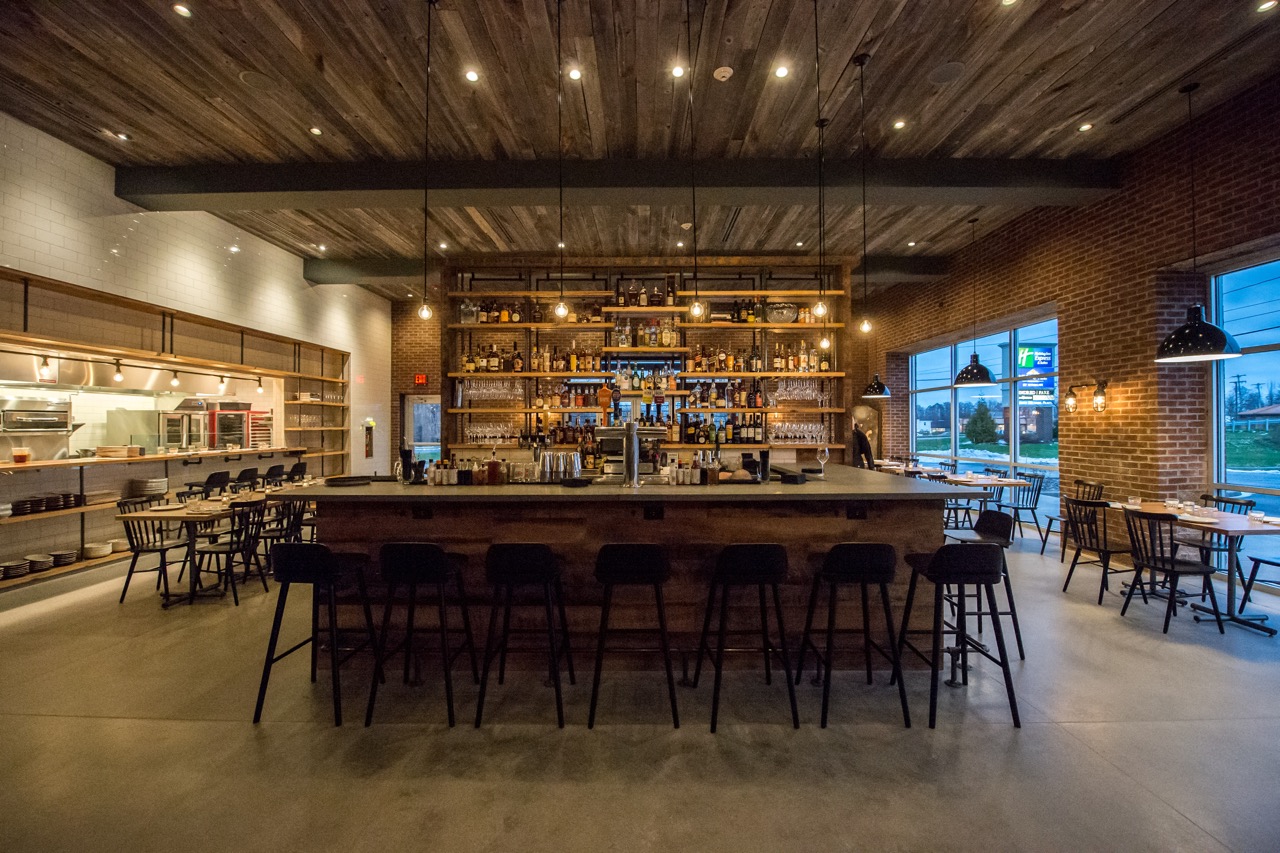 In Geneva,
on Seneca Lake, the main attraction is Belhurst Castle,
where you may stay in any of the eleven period
rooms and two cottages of the Chambers Hotel,
itself adjacent to the Vinifera Inn, which is more
contemporary in style and décor; its Turret Rooms
are the most desirable. Two miles west, White
Springs Manor is done in more of a Georgian
Revival mansion pillared style.
In Geneva,
on Seneca Lake, the main attraction is Belhurst Castle,
where you may stay in any of the eleven period
rooms and two cottages of the Chambers Hotel,
itself adjacent to the Vinifera Inn, which is more
contemporary in style and décor; its Turret Rooms
are the most desirable. Two miles west, White
Springs Manor is done in more of a Georgian
Revival mansion pillared style.
One of the best restaurants in the area is Kindred Fare (left), “a
spirited cookery,” which stocks a very good
selection of the best Finger Lakes wines to go
with the artisanal provender that makes up a menu
of hearty dishes like grilled zucchini and summer
squash with ricotta, duck, corn, broccoli and herb
butter ($14), grilled flatbreads ($14), a very
good Moroccan spiced meatball stew with chickpeas
and yogurt served with warm pita bread ($24), and
an Asian-style braised duck with stir-fried
vegetables and soy sauce ginger glaze ($28). The
summer’s fruit crumble for dessert shouldn’t be
missed.
In the three articles I have
done about the Finger Lakes over the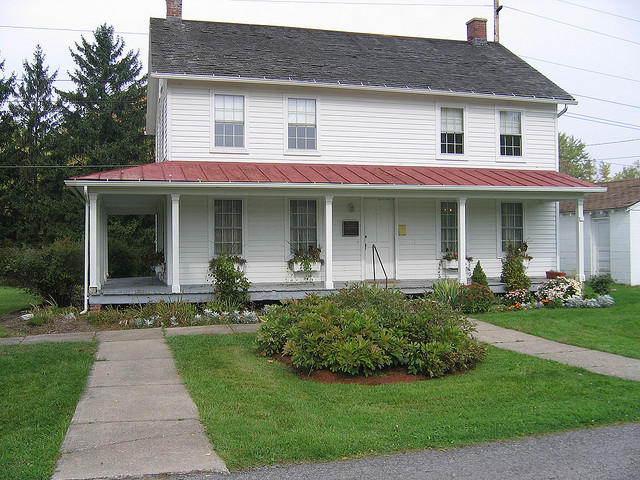 past few months, I have
barely scratched the surface of a region so varied
in its enchantments, from the broad blue lakes
themselves with their evocative Indian names to
the waterfalls that gush at full force in summer.
History riddles the region, from the Harriet Tubman Home
(right)
and Willard
Memorial Chapel designed by Louis C.
Tiffany in Auburn to the Rural Life Museum in
King Ferry and the New Hope gristmill,
built in 1823.
past few months, I have
barely scratched the surface of a region so varied
in its enchantments, from the broad blue lakes
themselves with their evocative Indian names to
the waterfalls that gush at full force in summer.
History riddles the region, from the Harriet Tubman Home
(right)
and Willard
Memorial Chapel designed by Louis C.
Tiffany in Auburn to the Rural Life Museum in
King Ferry and the New Hope gristmill,
built in 1823.
The myriad nature trails in the
area include the Erie
Canal Recreational Trail along the tow
boat route and the highly esteemed 157-acre Dorothy McIlroy Bird
Sanctuary in Summerhill.
The Finger Lakes are also home to traditional
diners with people’s first names. Along the
numbered routes farmers’ markets offer a bounty of
local foods straight through to October. Soon the
apples will be
picked—baskets
of
them by tourists—and pressed into cider. The grape
harvest will begin to produce Rieslings that are
among the finest in the world.
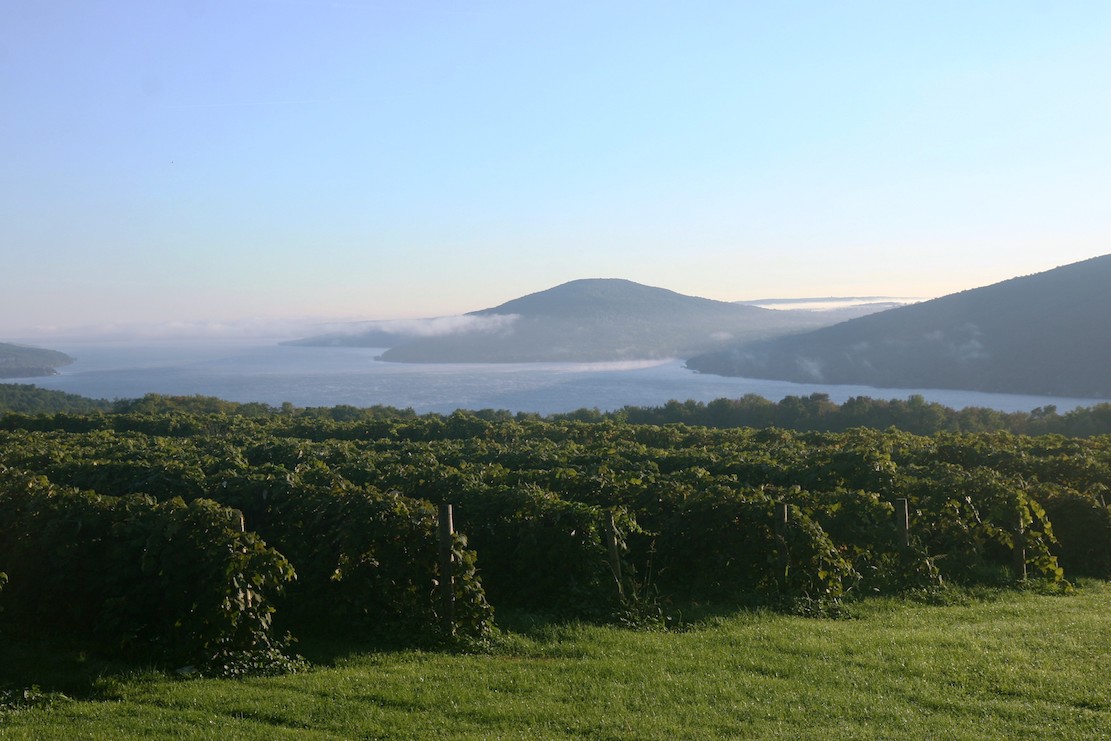
In summer the
aromas of rich soil and grasses and wildflowers
are always there—wild basil and
bergamot—intensified during the warm rain showers
and rising mists at morning. And at breakfast
there will be fresh bread, cured bacon, eggs
plucked from the nest just hours earlier, and
preserves of grapes and berries of every color.
And if you’re just a little
lucky, a rainbow may appear above the lake like a
sweeping greeting, seeming to beckon you to the
next place you’ll go to that day.
❖❖❖
By John Mariani
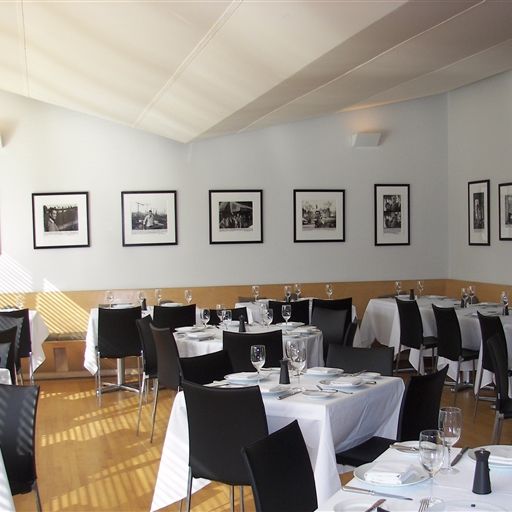
265
Glenville
Road
Greenwich,
CT
203-532- 9270
When
Rebeccas opened on a curve in the road
outside of downtown Greenwich, Connecticut,
there were no restaurants of its style and
cast in the NYC suburbs and few in Manhattan
itself. That was twenty years ago and the
minimalist design of the dining room not
only looks as fresh as it did then but has
acquired the status of a classic design,
from its clean, cool white and gray colors
and Canadian yellow pine blinds and polished
floor to its stainless steel accents, with
counter seating for eight at the open
kitchen.
The well-lighted bar as you enter fills up by
six o’clock and, in all those years, few of the
65 seats in the dining room have gone empty by
eight. Sustaining
that kind of faithful crowd—and it’s largely a
tony Westchester-Connecticut clientele who dress
wholly appropriate in a non-stuffy way—is
largely due to the unchanging stewardship of
Rebecca Kirhoffer and her chef-partner husband,
Reza Korshidi, not to mention a dedicated
kitchen staff that has barely changed in two
decades. The dining room staff seems to know
most of the guests, who depend on the captains
for advice and Kirhoffer for wine suggestions.
Kirhoffer studied design at
New York’s School of Visual Arts but moved into
the restaurant world as a private chef for
corporate dining at Smith Barney, where she met
the Swiss-born Korshidi, then at the NYC bistro
La Goulue. After marrying, they opened Rebeccas
in 1997. Back then I wrote of the restaurant’s
menu having “a mix of sharp flavors and brittle
textures exemplary of modern American cuisine.”
Amazingly, that style has not changed much over
the years, while evolving through the use of
better and better ingredients than ever before.
It’s rather like the way their guests’ clothes
have changed from Brooks Bros. to Ralph Lauren.
Certain dishes have never left the extensive à
la carte menu, like the corn blini with sour
cream and imported farm-raised osetra caviar
($26 or $52), the Dover sole (very decently
priced at $56), and baked 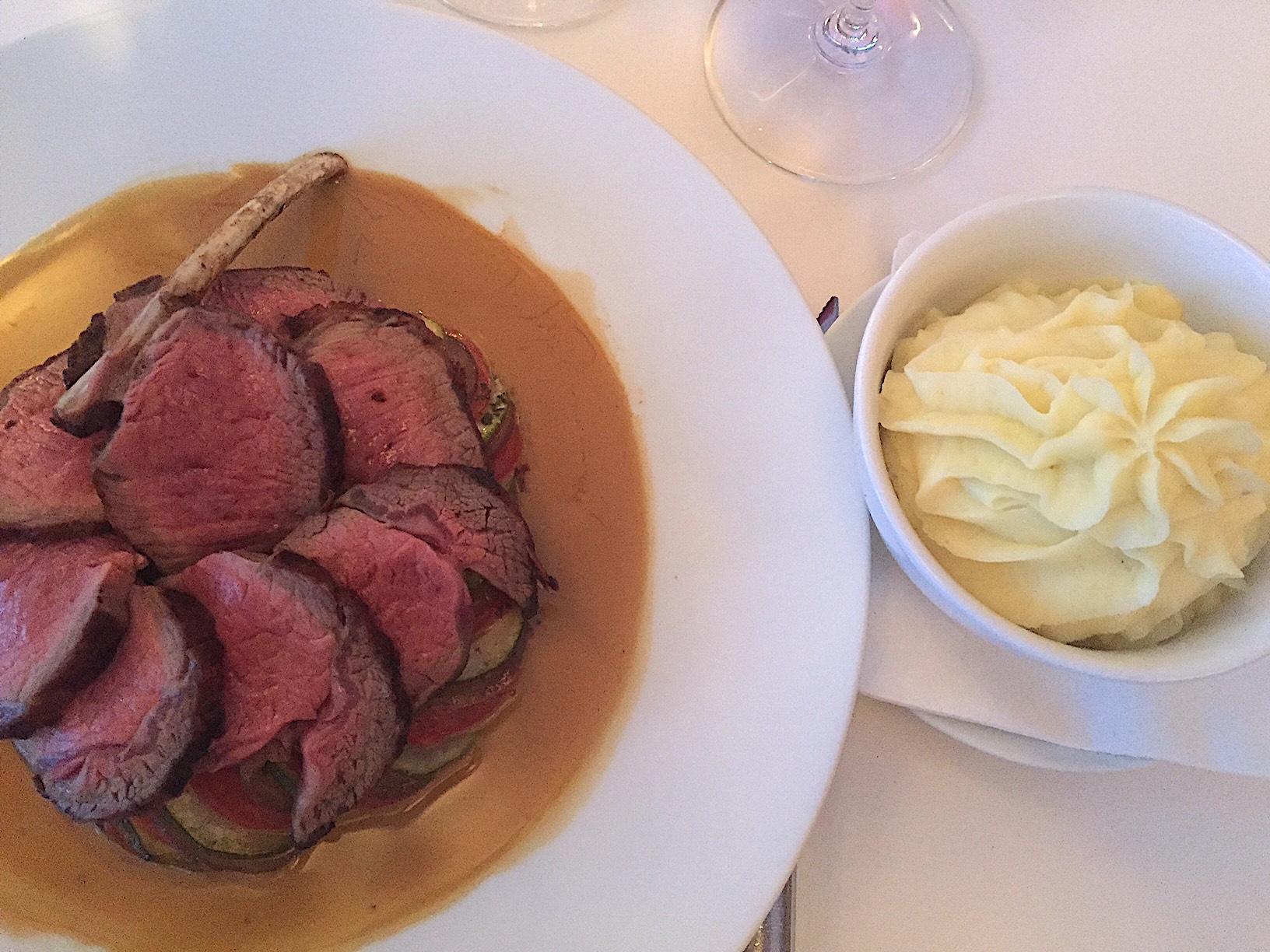 Alaska
($14). Others are brought back seasonally, with
specials galore, from soft shell crabs on wild
arugula and salsa
verde ($26) to Dutch jumbo white
asparagus with a morel mushroom ragôut ($32).
This being New England, there are always lobster
dishes, right now atop lemon risotto, asparagus
and green peas ($56).
Alaska
($14). Others are brought back seasonally, with
specials galore, from soft shell crabs on wild
arugula and salsa
verde ($26) to Dutch jumbo white
asparagus with a morel mushroom ragôut ($32).
This being New England, there are always lobster
dishes, right now atop lemon risotto, asparagus
and green peas ($56).
The duck foie gras, from the Hudson Valley, is
made into a finely textured and delicious
terrine ($36), served with a salad of artichoke
hearts, green beans and mâche with a mustard
vinaigrette. All these ingredients make all the
difference in the taste of the food, which is
never manipulated or overpowered.
The
day-boat
scallops are from Maine, served in a ragout of
Provencal vegetables with saffron couscous
($48), so it seems out of character to haul in
truffles from Australia and put them on
housemade fettuccine ($100) because they simply
don’t compare with European species. Better to
wait for fall, when the black truffles come in
from Périgord and white ones from Piedmont.
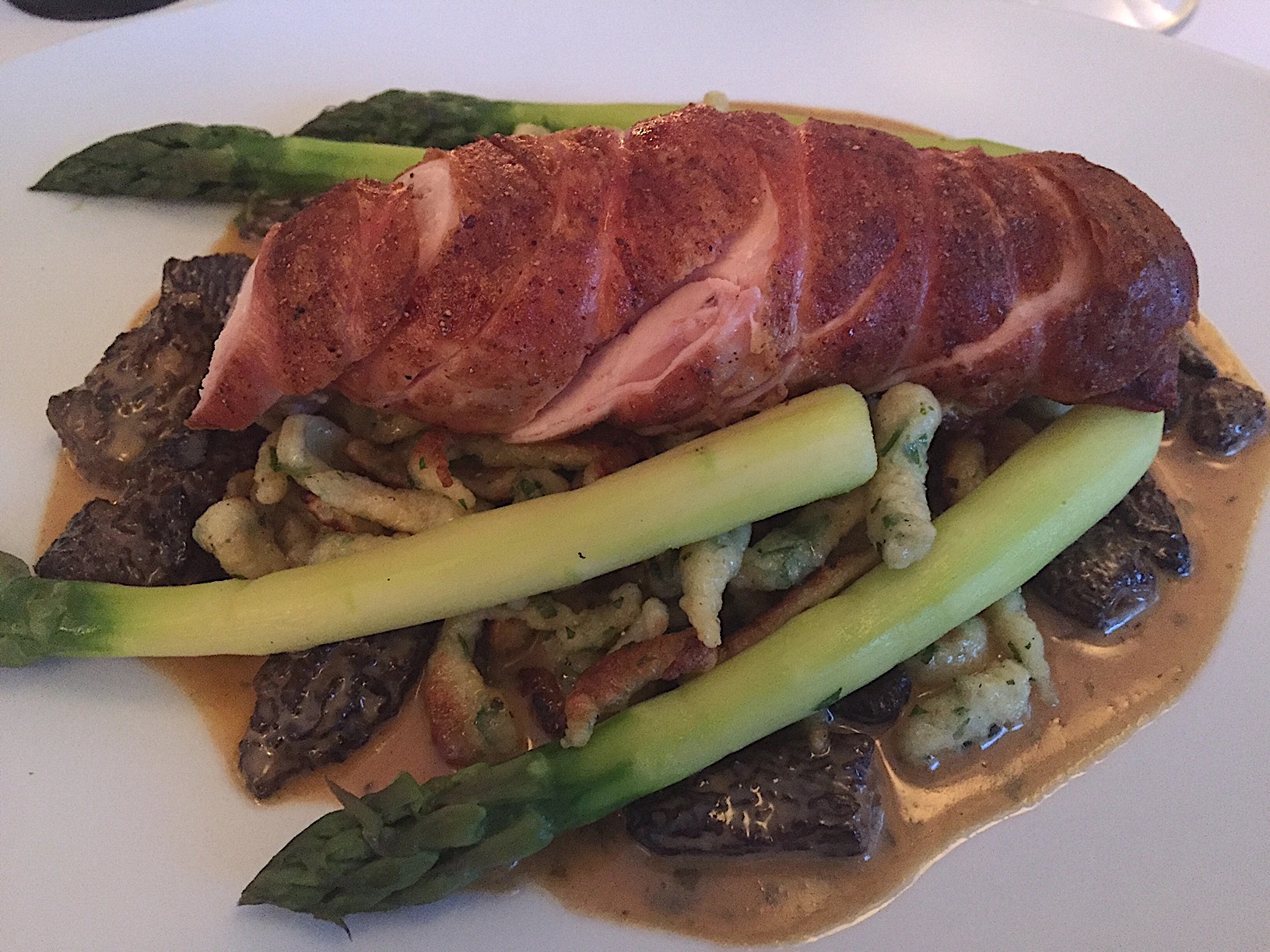 I am very happy to see
that the rack of lamb is from Colorado (above),
beautifully sliced and plated, with a decadently
rich bowl of butter-lavished potatoes ($54).
It’s a superb dish, as was a roasted saddle of
rabbit (left),
as meaty and flavorful as any I’ve ever eaten
($50), in a finely reduced mushroom sauce with
grilled asparagus and tender spaetzle—a great
summer evening’s dish with a glass of Riesling.
I am very happy to see
that the rack of lamb is from Colorado (above),
beautifully sliced and plated, with a decadently
rich bowl of butter-lavished potatoes ($54).
It’s a superb dish, as was a roasted saddle of
rabbit (left),
as meaty and flavorful as any I’ve ever eaten
($50), in a finely reduced mushroom sauce with
grilled asparagus and tender spaetzle—a great
summer evening’s dish with a glass of Riesling.
In a restaurant of this serious intent you
expect and receive an excellent sampling of
cheeses, which on any given night may include a
Tomme de chèvre Aydius from the Pyrenées, a raw
milk goat’s cheese from Consider Bardwell Farms
on the New York/Connecticut border, and a
Chantal-like Five Spoke Creamery Tumbleweed from
New York. All are served with walnuts and a
tangy-sweet apple compote ($22).
Go with friends so you can all taste a sampling
of desserts (each $14) that include that
delightfully old-fashioned signature baked
Alaska; a classic tarte Tatin with pistachio ice
cream (below);
a crème brûlée that has been perfected over
years; and a rum-soaked baba.
The wine list at Rebeccas has always been one of
the best in the region—it has to be to compete
with the first-rate cellars at nearby Thomas
Henkelmann at the Homestead Inn in Greenwich, La
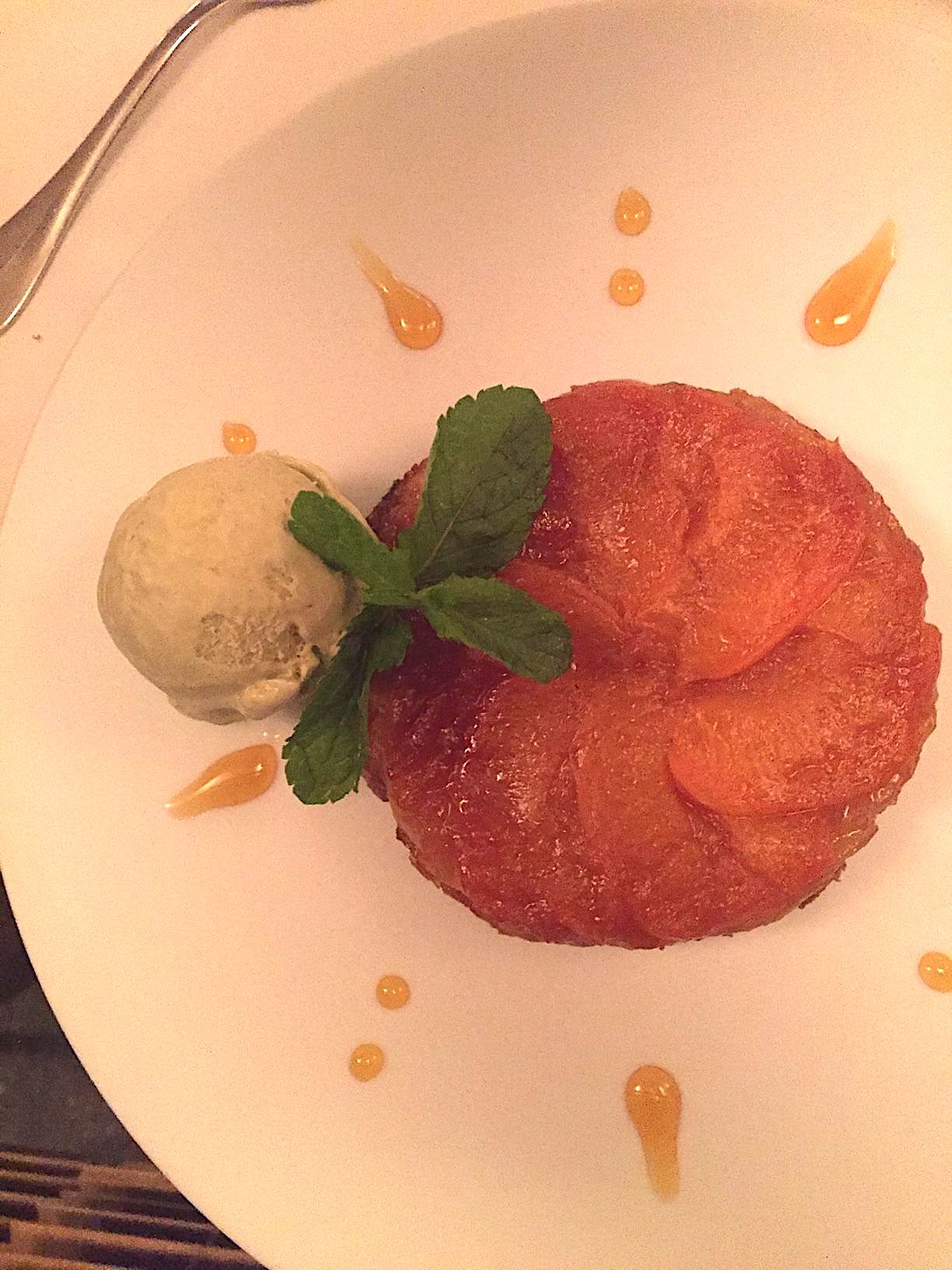 Panetière
in Rye and La Crémaillière in Banksville.
Kirhoffer selects her wines with real
discernment, not least the house wine of the
moment, a very good Burgundy poured by the
glass—Nuits Saint-Georges 2013 ($20). The list
has its trophy bottlings, but Kirhoffer much
prefers to keep a rolling stock of wines
appropriate to the season, so let her be your
guide and she will steer you to the perfect
bottle. Prices range from reasonable to high
mark-ups.
Panetière
in Rye and La Crémaillière in Banksville.
Kirhoffer selects her wines with real
discernment, not least the house wine of the
moment, a very good Burgundy poured by the
glass—Nuits Saint-Georges 2013 ($20). The list
has its trophy bottlings, but Kirhoffer much
prefers to keep a rolling stock of wines
appropriate to the season, so let her be your
guide and she will steer you to the perfect
bottle. Prices range from reasonable to high
mark-ups.
The spirits collection is also of note,
including 18 bourbons, five Calvados, and a
dozen single malt Scotches.
It’s no wonder that Rebeccas’ banquet business
thrives, not just on the quality of the food
served but on Kirhoffer’s handling everything
from the flowers to the lighting, so that it all
reflects that sense of decorous style she was
trained to provide.
Connecticut’s
Gold
Coast residents took a while to break out of
their country clubs to attain the culinary
sophistication level that their affluence could
readily sustain, and Rebeccas has been there to
enlighten them with the singular refinement
Kirhoffer and Khorshidi brought to the area more
than two decades ago.
Rebeccas is open for lunch Tues.-Fri.; for dinner Tues.-Sat.
❖❖❖
GLOBAL WINERIES FIGHTING BACK
AGAINST GLOBAL WARMING
By John Mariani
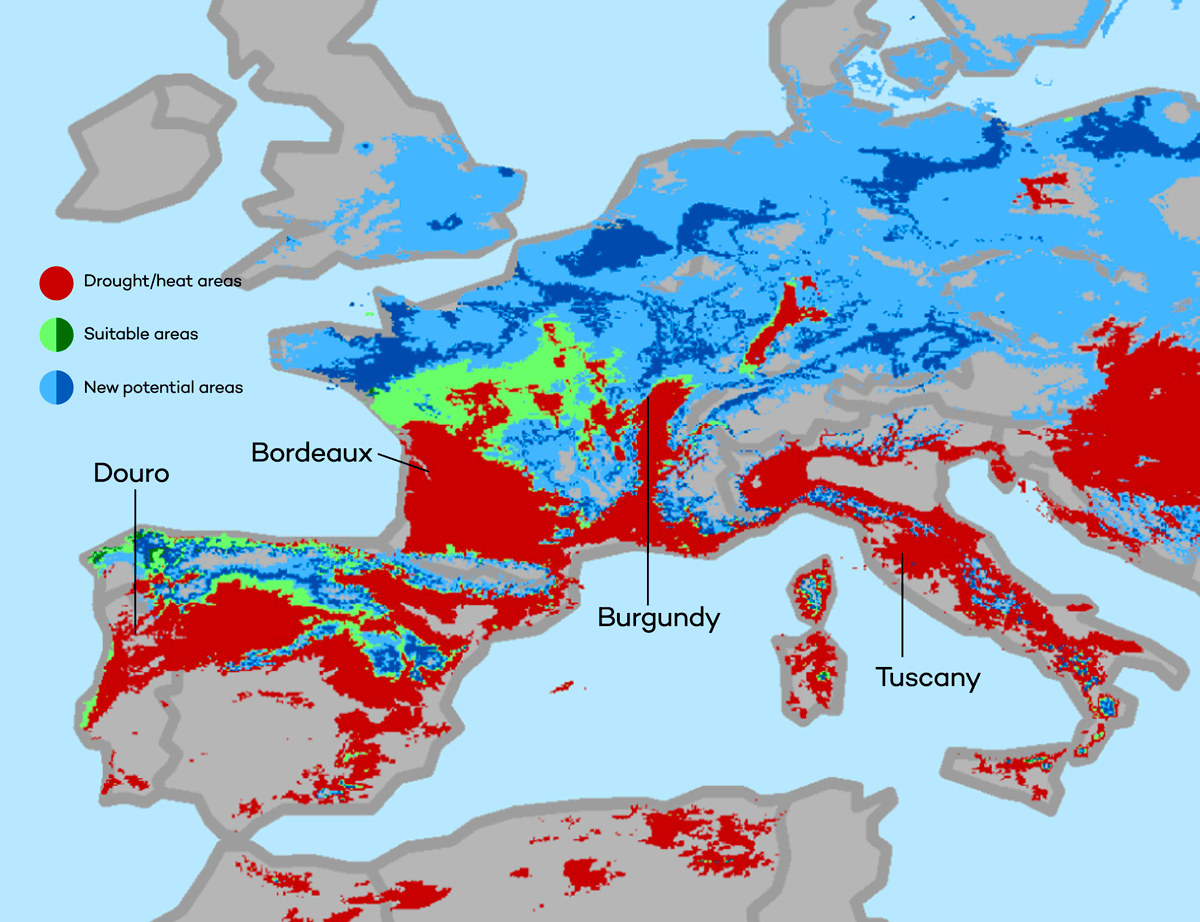
At a time when the United States is pulling out of the Paris Accords on climate change, the world’s vintners are already working hard both to counteract its effects already evident in the vineyards and to experiment with ways to cut their energy footprint and to restore balance to their terroirs.
This was brought into riveting focus at VINEXPO 2017, the bi-annual exposition in Bordeaux, France, that gathers thousands of industry professionals, from vintners to buyers. There, last month, the seminar with the provocative title “Fire & Rain: Climate Change and the Wine Industry” was delivered to a packed room, including many journalists, who came to hear the warnings about, and the countermeasures to, global warming that may have a radical effect on how grapes are grown and how wines are made in the future.
 Hosted by Dana Nigro,
senior editor of Wine
Spectator, the panel consisted of John P.
Holdren, Harvard
University professor of environmental science
and policy, who served as President Barack
Obama’s science adviser and director of the
White House Office of Science and Technology
Policy; Miguel A. Torres (left),
President of Bodegas Torres, an internationally
recognized leader in efforts to reduce winery
carbon emissions and educate the wine industry
about climate change; Gaia Gaja, a member of the
fifth generation of her family to own and manage
Barbaresco's renowned Gaja winery and the second
generation to run Gaja Family Wine Estates, with
Ca' Marcanda in Bolgheri and Pieve Santa
Restituta in Montalcino; and Kathryn Hall,
proprietor of Napa Valley’s HALL Wines, a leader
in energy efficiency with one of the world’s
only LEED Gold-certified wineries and
Gold-certified tasting rooms.
Hosted by Dana Nigro,
senior editor of Wine
Spectator, the panel consisted of John P.
Holdren, Harvard
University professor of environmental science
and policy, who served as President Barack
Obama’s science adviser and director of the
White House Office of Science and Technology
Policy; Miguel A. Torres (left),
President of Bodegas Torres, an internationally
recognized leader in efforts to reduce winery
carbon emissions and educate the wine industry
about climate change; Gaia Gaja, a member of the
fifth generation of her family to own and manage
Barbaresco's renowned Gaja winery and the second
generation to run Gaja Family Wine Estates, with
Ca' Marcanda in Bolgheri and Pieve Santa
Restituta in Montalcino; and Kathryn Hall,
proprietor of Napa Valley’s HALL Wines, a leader
in energy efficiency with one of the world’s
only LEED Gold-certified wineries and
Gold-certified tasting rooms.
Holdren presented the most up-to-date scientific data on how global warming has begun to affect vineyards around the world, in many cases as something of a boon to regions like Bordeaux and Burgundy that always crave more heat and sunshine. Indeed, on the day of the seminar the temperature in Bordeaux had soared close to 100 degrees and stayed there for the entire length of VINEXPO events.
Holdren’s contentions were backed up by a June
article in Forbes
in which Denis
Dubourdieu, winemaker and
professor of oenology at the University of
Bordeaux, reported that the French climate
definitely warmed between 2000 and 2010 and,
despite variations from year to year, France had
produced a number of great vintages within that
decade. He also said that even slight movements in
temperature and rainfall have an effect on good
vintages in such terroirs. By the
same token,
too dramatic effects of climate can be
“unfriendly,” including increased sugar levels,
cooked wines, toughened tannins and poor aging of
wines already tired when bottled.
to year, France had
produced a number of great vintages within that
decade. He also said that even slight movements in
temperature and rainfall have an effect on good
vintages in such terroirs. By the
same token,
too dramatic effects of climate can be
“unfriendly,” including increased sugar levels,
cooked wines, toughened tannins and poor aging of
wines already tired when bottled.
In the same article David Adelsheim of Oregon’s Adelsheim Vineyard was unequivocal in having deep concerns over extreme weather patterns, as does Frederick Frank of New York State’s Dr. Konstantin Frank Wine Cellars, who said the Finger Lakes growing season has been extended, harvest dates are earlier, grape maturity has been altered and, more important, winters have become quite volatile.
At the VINEXPO seminar, Miguel Torres said that in Chile “we have had fires of historic dimensions and frequency. This is weather we have not seen in the last fifty years.” At the Torres wineries they are trying a myriad of techniques to blunt the effects of CO2 emissions, including experiments to capture CO2 with algae and in greenhouses.
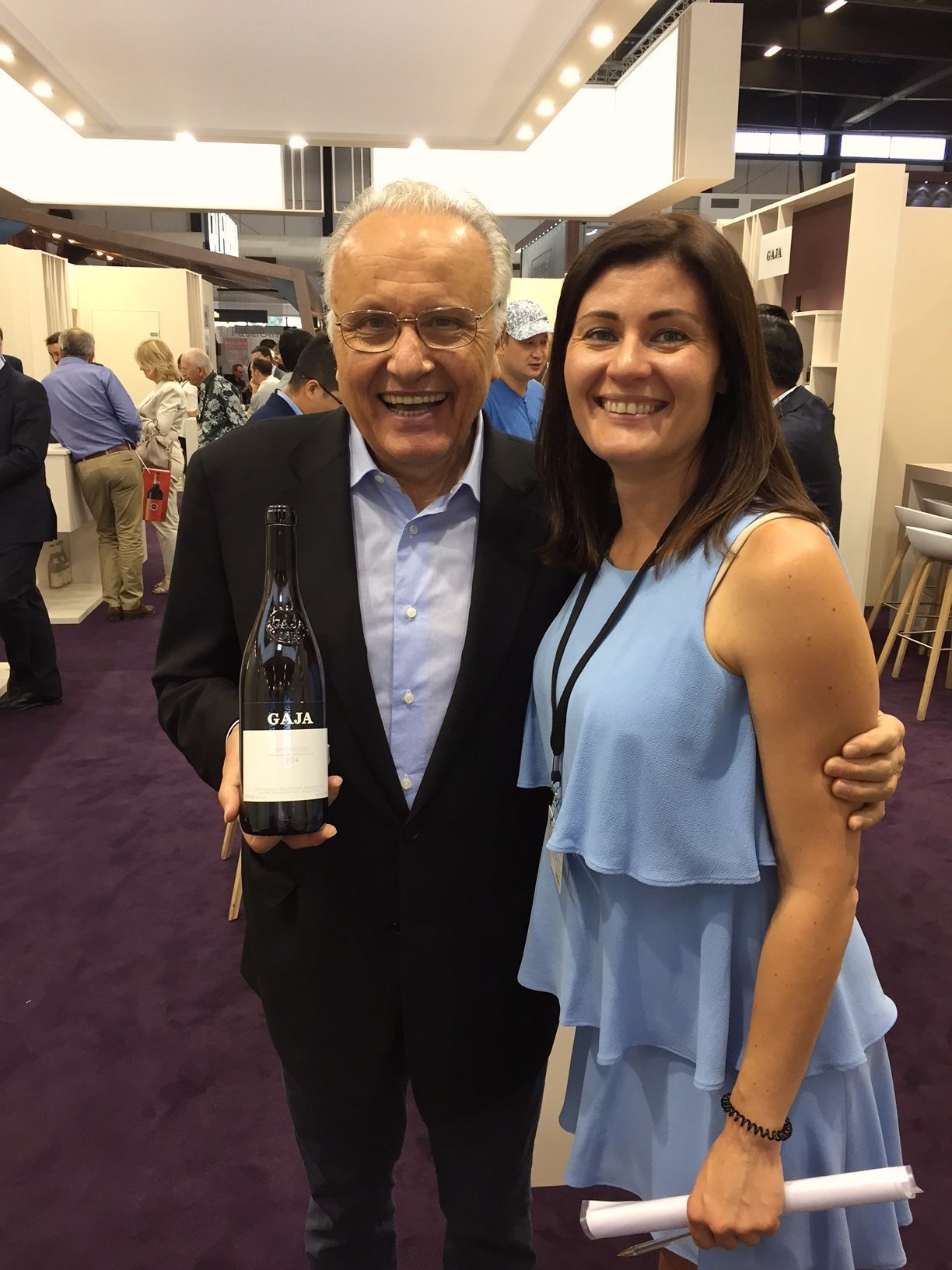 “We
are recovering CO2 from fermentation,” he
said, “and in the building materials we use and
the weight of the bottles for our wines. Planting
density has been cut back and we are experimenting
with ancient varietals that can take the heat
better, and, of course, we want to plant in higher
altitudes when we can.” He also noted that someday
he hopes to own a Tesla electric car.
“We
are recovering CO2 from fermentation,” he
said, “and in the building materials we use and
the weight of the bottles for our wines. Planting
density has been cut back and we are experimenting
with ancient varietals that can take the heat
better, and, of course, we want to plant in higher
altitudes when we can.” He also noted that someday
he hopes to own a Tesla electric car.
Gaia Gaja (left with her father Angelo)said that her family has always been very sensitive to the long-term effects of what they do within their terroir. “Viticulture requires a long relationship with the land to know it, to modify, and when to leave it alone. The challenge is in the vineyards, where you pay a high price for extreme temperatures. For one thing, you get very ripe grapes and high alcohol. Warm weather attracts moths and insects. You can’t manipulate the grapes when they get to the winery. It is why we only hire full-time workers who know our vineyards and how to work within them. Part-time amateurs take a long time to learn that.”
Gaja is throwing everything into the battle
against global warming: Growing grass higher so it
doesn’t drink so much water; cutting the grass to
make a blanket for the ground in  cold
months; planting many species of flowers and trees
like cypress to attract beneficial birds and
insects. “If
you have abundant life in a vineyard,” she says,
“you will have a thriving ecosystem.”
cold
months; planting many species of flowers and trees
like cypress to attract beneficial birds and
insects. “If
you have abundant life in a vineyard,” she says,
“you will have a thriving ecosystem.”
One new frontier in the battle is to create “sexual confusion” within the insect community, whereby pheromones are used to disturb the males’ responses to females, preventing the next generation. “The problem,” said Gaja, “is that if we do such experiments in our 700 hectares of vineyards, we have to convince our neighbors to do it too or else it doesn’t work.”
Kathryn Hall (right), who does own a Tesla as well as a Prius, once served as U.S. ambassador in agriculture, and admitted that in her vineyards in Napa Valley, “We do make wine from very ripe fruit and more structure, because, quite frankly, that’s what people like to drink.”
Nevertheless, she has been working assiduously to reduce energy consumption as much as possible throughout the LEEDS-certified facilities, including using solar power, which now provides 50% of the winery’s energy, soon to be 65%. “It is expensive to pour so many resources into fighting climate change,” she said, “but it is our personal commitment to do so. This is our land and change is already here, so we have to protect the future of our wines and of Napa Valley.”
IF NIKE CALLED, CAN
L'ORÉAL SKIN CARE BE FAR BEHIND?
Nike has come out with a limited
edition sneaker in league with Celeb Chef David Chang,
who catered many Nike events
through the years, and its senior creative director was
one of Noodle Bar's first customers. The sneaker
itself is a high top made with dark denim, as are the
aprons at Momofuku — and an embroidered Lucky Peach
logo. The numbers “163” and “207” are on the sock
liners, signifying the addresses of the original Noodle
Bar location and Ssam Bar, respectively. Noodle has
since moved and the space is now a Fuku. The shoes
will retail for $110.
WITH THE
EXCEPTION OF ALL THESE THAT OPENED IN NYC IN THE PAST
MONTH: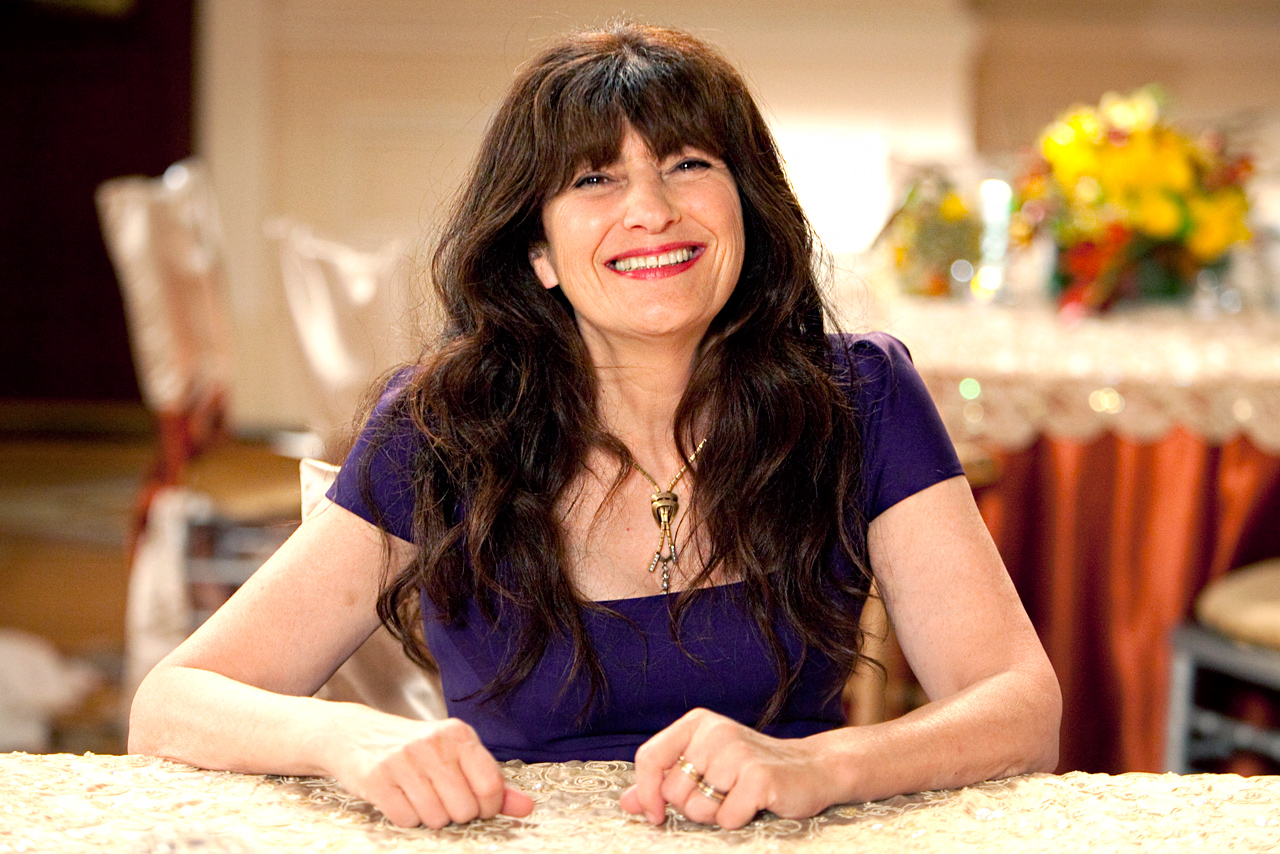
Jean-Georges Vongerichten's Public, ABCV and Louis;
Cote steakhouse ; Emily; Nur; Park Life; Little Alley;
Cecconi's; Satay Bar; Phil & Ann's; Empellon; Made
Nice; Seawalk; Island Oyster; Dining Room at the
Metropolitan Museum of Art; Sushi by Bou; The Pool;
Black Tap; Mondayoff; Fuku; Imli;Fatbird; DeKalb
Market Hall; aRoka; Mr Wish : Casa Publica; Tramonti;
Chalait; Pig Beach; Gilligans ; Oceana Poke, Butcher
Bar, Miss Ida; Altesi; Raw Mkt; Icelandic Fish &
Chips; Jane Brooklyn; Cervo's; MakiMaki, Ms Yoo,
Omakase Room and more.
"No one can afford to
open a restaurant in NYC anymore."--Ruth Reichl, as
quoted in the
NYTimes (6/19).
❖❖❖
Sponsored
by Banfi Vintners
SUMMER IS HERE
AND SO ARE WONDERFUL CHILEAN WINE
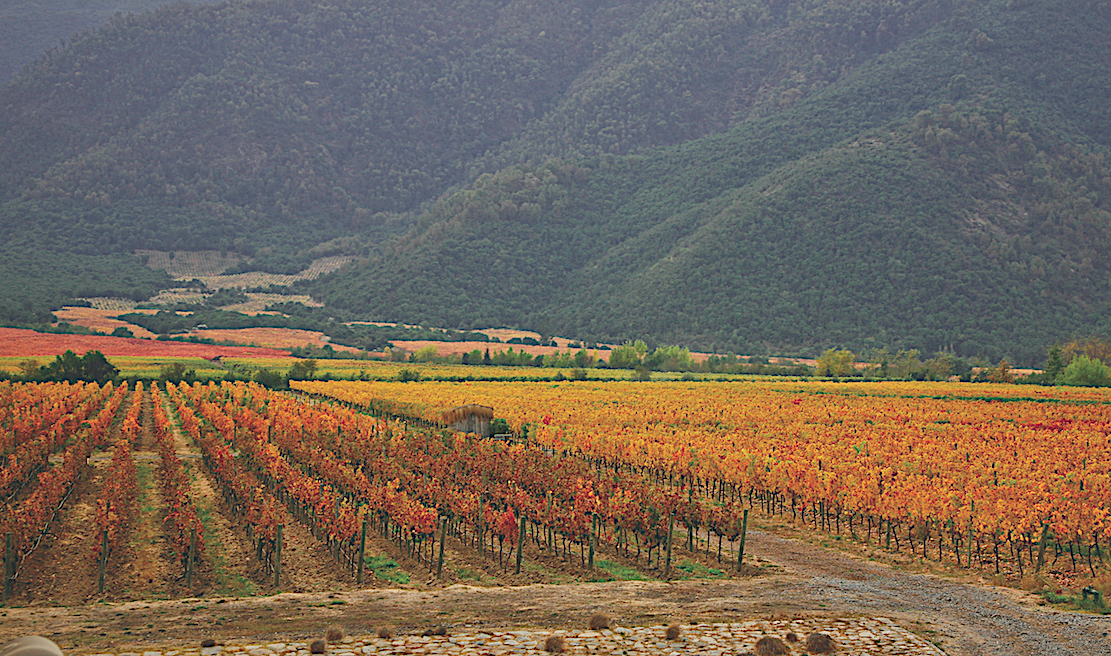
As Summer evolves, we are reminded of the fragility of Mother Earth and her bounty. As an importer representing several family wine makers from around the globe, I often like to point out that all the wines that we represent are green, some of them greener than others. The greenest of all are classified as Biodynamic or certified Organic. One of the most interesting selections of eco-balanced, organic and biodynamic wines comes to us from Chile and the vineyards of Emiliana.
Emiliana was founded
by our friends, the Guilisasti family, who have a long
and proud history of winemaking with their Concha y Toro
brand. Three decades ago, well ahead of the curve
that has made organic wines all the rage today, they set
up dedicated and, most important for organic farming,
isolated vineyards for this type of agriculture.
Many may picture the small farmer as being the most
“organic,” but in the reality of our wine world,
sometimes it takes the “big guys” to act as a locomotive
to get a movement such as this on
track.
Organic farming is a form of
agriculture which avoids or largely excludes the use of
synthetic fertilizers and pesticides, plant growth
regulators, and livestock feed additives.
 Organic farmers rely on crop
rotation, crop residues, animal manures--including
llamas (below)--and
mechanical cultivation to maintain soils productivity
and health, to supply plant nutrients, and to control
weeds, insects and other pests. To call a wine
organic in the US, government regulation says that it
must be produced from 95% organically grown ingredients
with no added sulfites. If you add sulfites in the
relatively minimal amount of 100 parts per million, you
can only say that the wine is “made from organically
grown grapes.” Now, not to go into a chemistry
lesson, but it is virtually impossible to make a wine
without that modest dose of sulfites, at least if you
want to drink it beyond ten feet of the cellar it was
made in and wish it to survive any moderate amount of
aging.
Organic farmers rely on crop
rotation, crop residues, animal manures--including
llamas (below)--and
mechanical cultivation to maintain soils productivity
and health, to supply plant nutrients, and to control
weeds, insects and other pests. To call a wine
organic in the US, government regulation says that it
must be produced from 95% organically grown ingredients
with no added sulfites. If you add sulfites in the
relatively minimal amount of 100 parts per million, you
can only say that the wine is “made from organically
grown grapes.” Now, not to go into a chemistry
lesson, but it is virtually impossible to make a wine
without that modest dose of sulfites, at least if you
want to drink it beyond ten feet of the cellar it was
made in and wish it to survive any moderate amount of
aging.
Biodynamic
farming adheres to the same principles, but takes it one
step further by relying on the cycles of the moon and
the sun to dictate much of what is done in the field,
and uses animal treatments such as compost teas, horns
buried with fertilizer, deer bladders, etc., to treat
the soil. It may sound a little hocus pocus, but
in reality it is very comparable to homeopathic
medicine, using the body’s (in this case, the earth’s)
own energy to heal itself.
Emiliana
has four distinct collections of lovingly crafted
organic wine now available in the US – the base line of
Natura, the next step up in Novas, a stand-alone wine in
Coyam, and the ne-plus-ultra of bio-dynamic wines,
Ge. One taste of any of these and you too may find
yourself turning green – not with envy, but for a
newfound love of organic winemaking!
Recommended – green wines for Spring:
Natura Chardonnay In the cool coastal Pacific climate of the
Casablanca Valley, organically grown grapes are hand
picked during the last 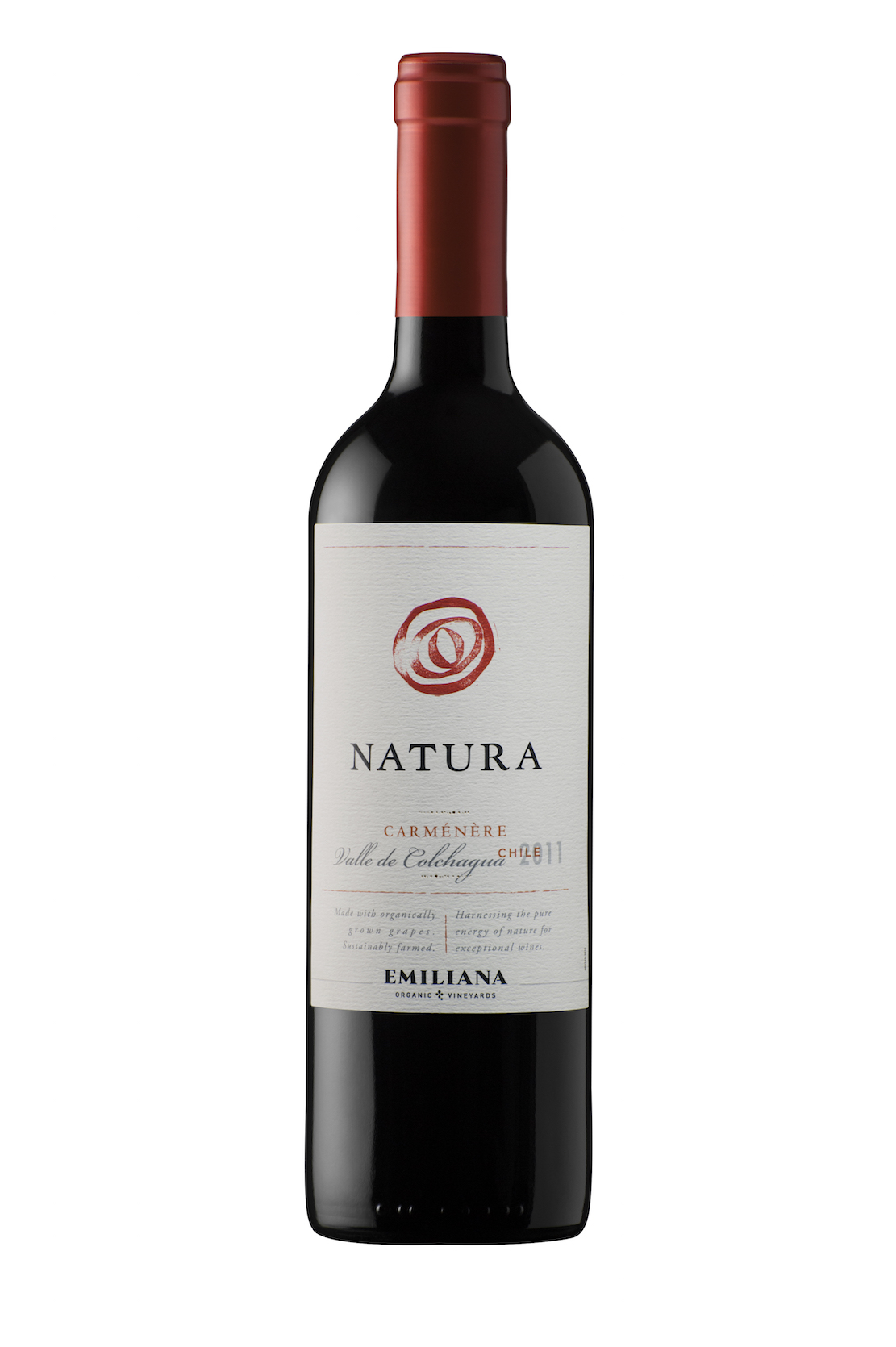 week of March,
and vinified in stainless steel tanks, free of the
domineering influence of oak. On the nose,
tantalizing citrus aromas of grapefruit and lime blend
with notes of pineapple, all of which reappear on the
palate and finish with balance thanks to the wine’s
freshness and natural acidity. Delicious with
spring salads and seafood dishes.
week of March,
and vinified in stainless steel tanks, free of the
domineering influence of oak. On the nose,
tantalizing citrus aromas of grapefruit and lime blend
with notes of pineapple, all of which reappear on the
palate and finish with balance thanks to the wine’s
freshness and natural acidity. Delicious with
spring salads and seafood dishes.
Natura Carmenere – From the rustic isolation of the
Colchagua Valley, this intense and voluptuous offers
aromas of cherries, chocolate and spice, coming together
in ramped up volume on the palate with soft, round
tannins and firm, well-balanced structure. Great
balance between fruit and oak, with a long, juicy
finish.
Novas Sauvignon Blanc Gran Reserva – Hailing from the San Antonio Valley’s thin
rocky and clay soils, the organic grapes for this wine
are harvested by hand in March and undergo fermentation
in stainless steel to preserve their bright fruit
character. Herbal notes mixed with citrus and soft
floral hints fill the bouquet; the taste is medium
bodied with grapefruit flavors joined by a delicate
acidity and a touch of minerality.
Novas Pinot Noir Gran Reserva – The grapes for this wine are grown in the
cool, coastal Casablanca Valley’s permeable sandy loam
soils, and harvested by hand. After a cold soak on
the skins, the wine is aged for 8 months in French oak
barrels to add character, depth and roundness.
 Bright ruby red in color with attractive
aromas of berries, strawberries and notes of spice and
cocoa, this wine bursts with fruit flavor, layered with
earthiness. Delicious with white meats, light sauces,
full flavored fish and shellfish, cured ham and sushi.
Bright ruby red in color with attractive
aromas of berries, strawberries and notes of spice and
cocoa, this wine bursts with fruit flavor, layered with
earthiness. Delicious with white meats, light sauces,
full flavored fish and shellfish, cured ham and sushi.
Coyam – A blend dominated by Syrah with nearly
equal parts of Carmenere and Merlot balanced by
“soupcons” of Cabernet Sauvignon, Mourvedre and Petit
Verdot, from the Colchagua Valley estate called Los
Robles – Spanish for the oaks, called “Coyam” by
the native Mapuche people in their own language. Hand
harvested certified biodynamic grapes are naturally
fermented in French oak barrels. Coyam is largely
unfiltered and aged for 13 months in barrels.
Aromas of ripe red and black fruits integrate with notes
of spice, earth and a hint of vanilla bean.
Elegant expressions of fruit are delicately interwoven
with oak, mineral and toffee.
Ge – Chile’s first certified biodynamic wine,
the name Ge is a nod to Geos, the earthly environment
pulling together all the elements that surround
us. Ge is a blend of nearly equal parts of Syrah,
Carmenere and Cabernet Sauvignon grown in the deep soils
of colluvial origin in the coastal range, which lends
mineral complexity. Naturally fermented in oak barrels,
Ge is deep plum red with violet tones; it offers intense
aromas of black fruits and berries alongside mineral
notes and a soft touch of tobacco leaf. Generously
fruity with cedar notes, Ge is well balanced with
tremendous volume, well rounded tannins and a long
finish.
For more information please visit http://www.banfiwines.com/winery/emiliana/
Any of John Mariani's books below may be ordered from amazon.com.
 The
Hound in Heaven (21st Century Lion Books)
is a novella, and for anyone who loves dogs,
Christmas, romance, inspiration, even the supernatural, I
hope you'll find this to be a treasured favorite.
The story concerns how, after a New England teacher,
his wife and their two daughters adopt a stray puppy found
in their barn in northern Maine, their lives seem full of
promise. But when tragedy strikes, their wonderful dog
Lazarus and the spirit of Christmas are the only things
that may bring his master back from the edge of
despair.
The
Hound in Heaven (21st Century Lion Books)
is a novella, and for anyone who loves dogs,
Christmas, romance, inspiration, even the supernatural, I
hope you'll find this to be a treasured favorite.
The story concerns how, after a New England teacher,
his wife and their two daughters adopt a stray puppy found
in their barn in northern Maine, their lives seem full of
promise. But when tragedy strikes, their wonderful dog
Lazarus and the spirit of Christmas are the only things
that may bring his master back from the edge of
despair. WATCH THE VIDEO!
“What a huge surprise turn this story took! I was completely stunned! I truly enjoyed this book and its message.” – Actress Ali MacGraw
“He had me at Page One. The amount of heart, human insight, soul searching, and deft literary strength that John Mariani pours into this airtight novella is vertigo-inducing. Perhaps ‘wow’ would be the best comment.” – James Dalessandro, author of Bohemian Heart and 1906.
“John Mariani’s Hound in Heaven starts with a well-painted portrayal of an American family, along with the requisite dog. A surprise event flips the action of the novel and captures us for a voyage leading to a hopeful and heart-warming message. A page turning, one sitting read, it’s the perfect antidote for the winter and promotion of holiday celebration.” – Ann Pearlman, author of The Christmas Cookie Club and A Gift for my Sister.
“John Mariani’s concise, achingly beautiful novella pulls a literary rabbit out of a hat – a mash-up of the cosmic and the intimate, the tragic and the heart-warming – a Christmas tale for all ages, and all faiths. Read it to your children, read it to yourself… but read it. Early and often. Highly recommended.” – Jay Bonansinga, New York Times bestselling author of Pinkerton’s War, The Sinking of The Eastland, and The Walking Dead: The Road To Woodbury.
“Amazing things happen when you open your heart to an animal. The Hound in Heaven delivers a powerful story of healing that is forged in the spiritual relationship between a man and his best friend. The book brings a message of hope that can enrich our images of family, love, and loss.” – Dr. Barbara Royal, author of The Royal Treatment.
 |
The Encyclopedia of American Food and Drink by John F. Mariani (Bloomsbury USA, $35) Modesty forbids me to praise my own new book, but let me proudly say that it is an extensive revision of the 4th edition that appeared more than a decade ago, before locavores, molecular cuisine, modernist cuisine, the Food Network and so much more, now included. Word origins have been completely updated, as have per capita consumption and production stats. Most important, for the first time since publication in the 1980s, the book includes more than 100 biographies of Americans who have changed the way we cook, eat and drink -- from Fannie Farmer and Julia Child to Robert Mondavi and Thomas Keller. "This book is amazing! It has entries for everything from `abalone' to `zwieback,' plus more than 500 recipes for classic American dishes and drinks."--Devra First, The Boston Globe. "Much needed in any kitchen library."--Bon Appetit. |
"Eating Italian will never be the same after reading John Mariani's entertaining and savory gastronomical history of the cuisine of Italy and how it won over appetites worldwide. . . . This book is such a tasteful narrative that it will literally make you hungry for Italian food and arouse your appetite for gastronomical history."--Don Oldenburg, USA Today. "Italian
restaurants--some good, some glitzy--far
outnumber their French rivals. Many of
these establishments are zestfully described
in How Italian Food Conquered the World, an
entertaining and fact-filled chronicle by
food-and-wine correspondent John F.
Mariani."--Aram Bakshian Jr., Wall Street
Journal.
"Equal parts
history, sociology, gastronomy, and just
plain fun, How Italian Food Conquered the
World tells the captivating and delicious
story of the (let's face it) everybody's
favorite cuisine with clarity, verve and
more than one surprise."--Colman Andrews,
editorial director of The Daily
Meal.com. "A fantastic and fascinating
read, covering everything from the influence
of Venice's spice trade to the impact of
Italian immigrants in America and the
evolution of alta cucina. This book will
serve as a terrific resource to anyone
interested in the real story of Italian
food."--Mary Ann Esposito, host of PBS-TV's
Ciao
Italia. "John Mariani has written the
definitive history of how Italians won their
way into our hearts, minds, and
stomachs. It's a story of pleasure over
pomp and taste over technique."--Danny Meyer,
owner of NYC restaurants Union Square
Cafe, The Modern, and Maialino.
|
 |
 |
 |
 |
 |
 |
 |
 |
 Everett Potter's Travel Report:
Everett Potter's Travel Report: 
 Eating Las Vegas
JOHN CURTAS has been covering the Las Vegas
food and restaurant scene since 1995. He is
the co-author of EATING LAS VEGAS – The 50
Essential Restaurants (as well as
the author of the Eating Las Vegas web site: www.eatinglasvegas.
He can also be seen every Friday morning as
the “resident foodie” for Wake Up With the
Wagners on KSNV TV (NBC) Channel 3 in
Las Vegas.
Eating Las Vegas
JOHN CURTAS has been covering the Las Vegas
food and restaurant scene since 1995. He is
the co-author of EATING LAS VEGAS – The 50
Essential Restaurants (as well as
the author of the Eating Las Vegas web site: www.eatinglasvegas.
He can also be seen every Friday morning as
the “resident foodie” for Wake Up With the
Wagners on KSNV TV (NBC) Channel 3 in
Las Vegas.

MARIANI'S VIRTUAL GOURMET
NEWSLETTER is published weekly. Editor/Publisher: John
Mariani.
Editor: Walter Bagley. Contributing Writers: Christopher Mariani,
Robert Mariani, Misha Mariani, John A. Curtas, Geoff Kalish, Mort
Hochstein, and
Brian Freedman. Contributing Photographer: Galina
Dargery. Technical Advisor: Gerry McLoughlin.
To un-subscribe from this newsletter,click here.
© copyright John Mariani 2017

